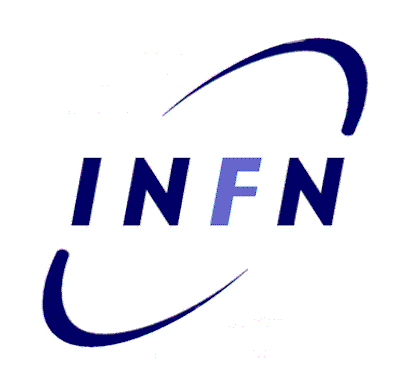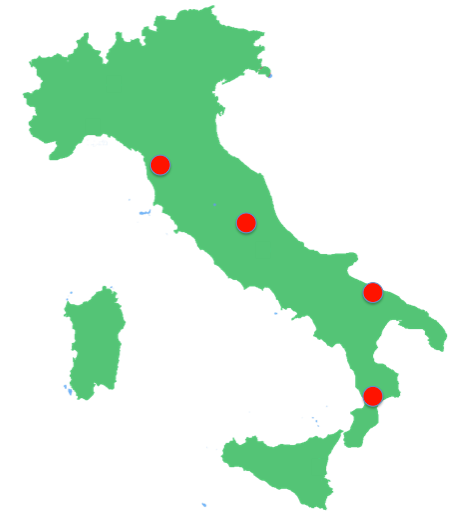NPQCD
Non-Perturbative QCD
Understanding the properties of strong interactions at large distances and in extreme conditions
Scientific activities of the various Research Units
All the research Units in this Research Network share the interest
to investigate the strong interaction dynamics at large distances where
the perturbative approach to QCD is not applicable.
Therefore different skills and knowledges from the research Units
can be profitably integrated to achieve significant results.
Bari
- Study of QCD flux tubes at zero temperature and around the deconfinement phase transition and their relevance to the dynamics of the confinement/deconfinement [joint effort of the Bari and Cosenza-LNGS units].
- Lattice study of the phase diagram of QCD on the temperature - baryon chemical potential plane and its comparison with phenomenological data [joint effort of the Bari and Cosenza-LNGS units].
- Study of the effect of strong external fields (chromomagnetic and magnetic) on the QCD dynamics using a method based on the Schrödinger functional.
Cosenza & LNGS
- Study of QCD flux tubes at zero temperature and around the deconfinement phase transition and their relevance to the dynamics of the confinement/deconfinement [joint effort of the Bari and Cosenza-LNGS units].
- Lattice study of the phase diagram of QCD on the temperature - baryon chemical potential plane and its comparison with phenomenological data [joint effort of the Bari and Cosenza-LNGS units].
- Study of the theta dependence of Lattice QCD at zero and finite temperature.
- Study of three-dimensional SU(3) spin models and its possible equivalence to QCD in the strong coupling limit and in the limit of static quarks, with implications on understanding of the phase structure of strong interacting matter.
Pisa
- Study of the phase diagram of QCD at finite temperature and non-zero baryon chemical potential. Determination of the nature of the Roberge-Weiss endpoin transition as a function of quark masses and in the continuum limit. Determination of the pseudocritical line for real chemical potentials. Investigation on the higher order fluctuations of conserved charges and their possible relation with the critical endpoint;
- Study of the theta dependence in QCD-like theories and in full QCD, with a particular focus on issued related to axion phenomenology;
- Study of the theta dependence of the QCD vacuumm and its relationships with chiral symmetries, by means of Chiral Effective Lagrangians.
- Study of the 2D Heisenberg model with a theta term in the deep non-zero theta region.
- Study of the influence of a magnetic background field on the dynamics of heavy-ion collisions, considering the effects of strong variations of the magnetic field both in space and time.
- Development of an efficient cluster algorithm to be used eventually for gauge theories.
- Development of new codes and algorithms to be run on exploratory computational architectures at the frontier of HPC.
^ Back to Top


